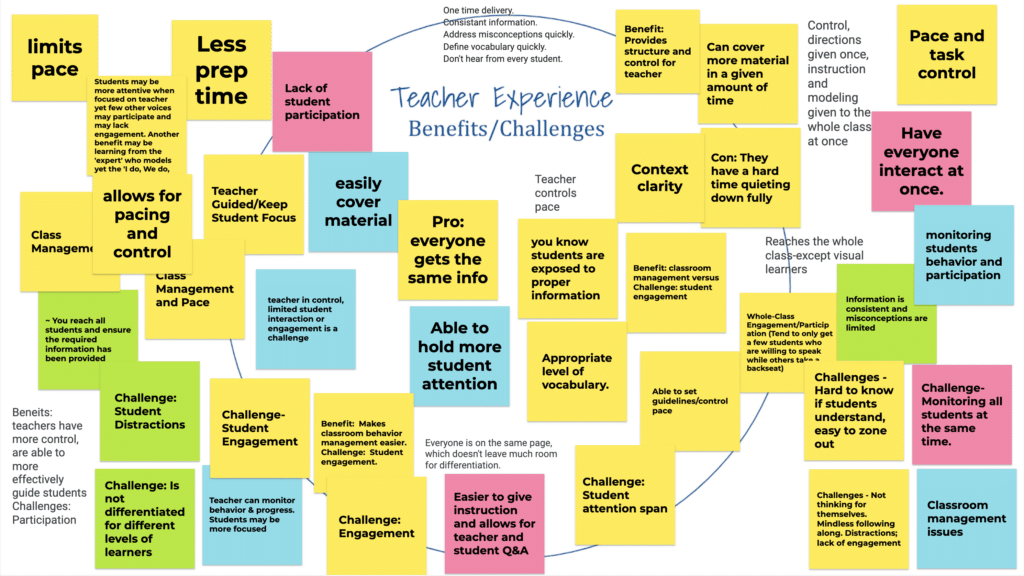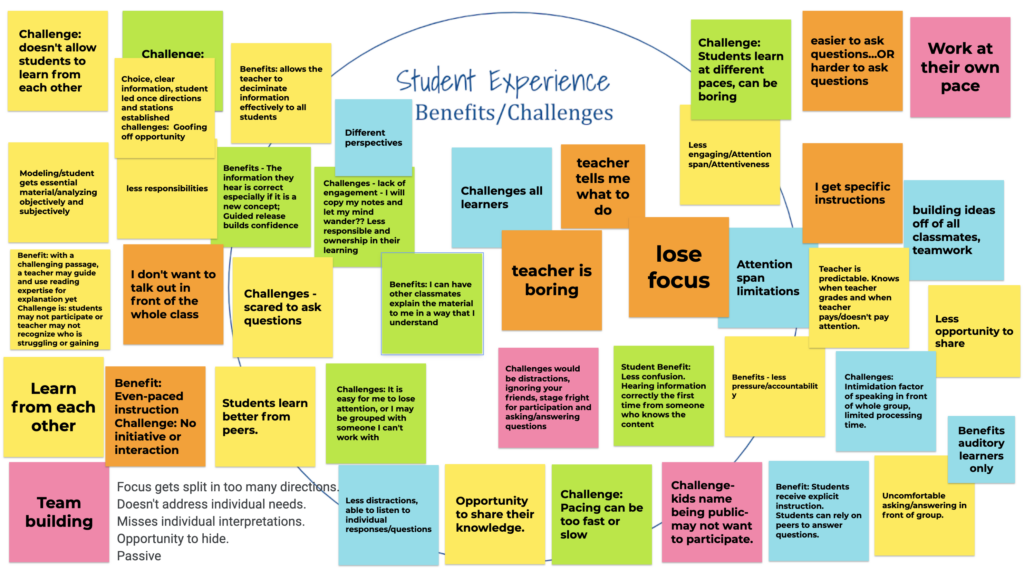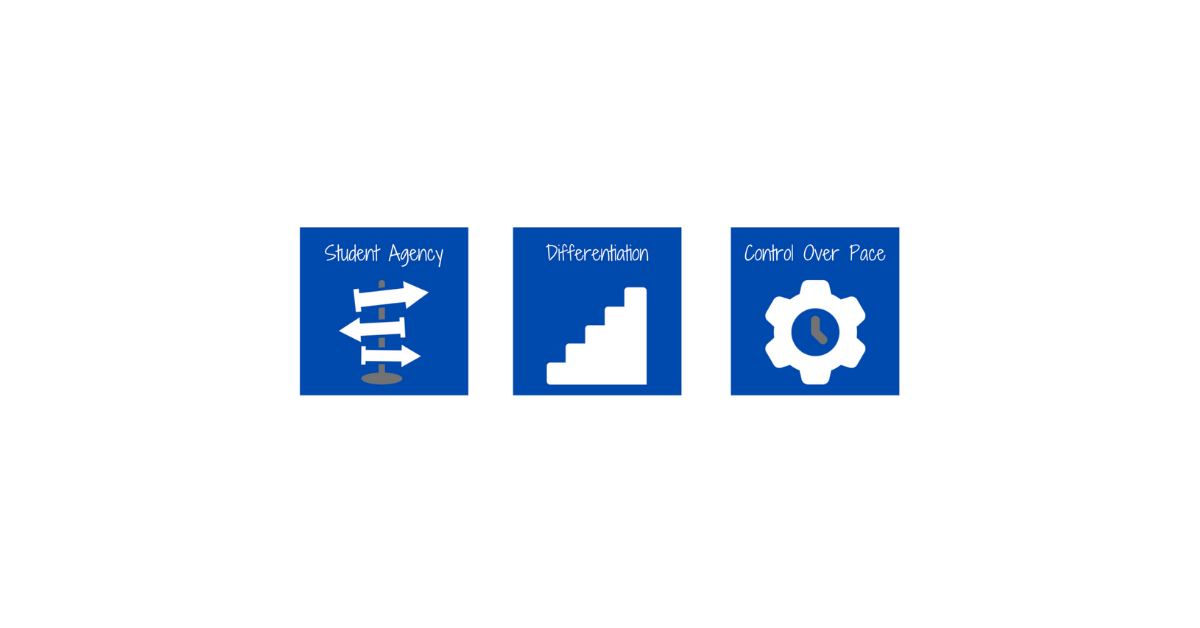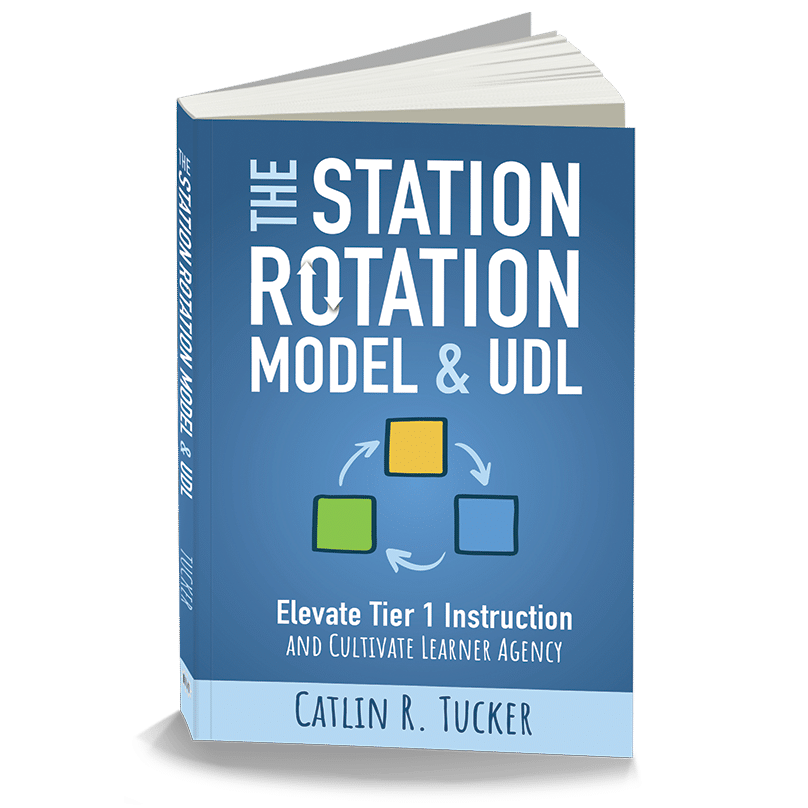When I work with teachers shifting to blended learning, I strive to establish the WHY driving our work together. I want teachers to understand the purpose and value of the shift to blended learning. Blended learning is not a reaction to a moment. Blended learning is the thoughtful design and facilitation of learning experiences that strive to shift control from teacher to learner by weaving together active, engaged learning online and offline. This blend of online and offline learning can happen exclusively in the classroom with the station rotation and whole group rotation models. It can combine both in-class and online learning at home with the flipped classroom and playlist models. These models are flexible and able to transcend any single teaching and learning landscape. It is that flexibility that is so exciting given the challenges facing educators and educational institutions.
Even though I know why it’s worthwhile to develop our teacher toolboxes with a collection of blended learning models instead of relying exclusively on whole group instruction, it’s essential for teachers to think about the benefits and drawbacks of this heavily used approach. I hope that a close examination of this approach to designing and facilitating lessons will motivate teachers to explore alternative models that free them from the front of the room.
In training sessions, I ask teachers to think about why they use this model. I ask them to brainstorm and discuss with colleagues the benefits and challenges of teaching using the whole group, teacher-led, teacher-paced model. Below is an image of teacher responses to the following questions: What are the benefits and challenges of the whole group, teacher-led model from your perspective?

Below are the benefits and challenges of teaching in a whole group lesson.
| Benefits | Challenges |
| Classroom management | Student engagement |
| Control the pace | Student attention spans |
| Able to cover more material in less time | Student distractions or behavior issues |
| Less preparation required | Limited student interaction and low levels of participation |
| All students hear the same information with the implication that information can be presented one time | Differentiation |
| The teacher can guide students and keep them focused | Students do not have to think for themselves |
Teachers appreciate the increased control they have in a whole group lesson as well as the ease in preparing a single learning experience for the whole class. However, they recognize that this design does not engage all students, allow for consistent differentiation, or provide learners with control over their experience. It’s clear that designing and facilitating learning using a whole group, teacher-led design is more manageable for the teacher, but does not necessarily yield the best results for students.
When I ask teachers to shift gears and put themselves in the seat of a student in a whole group, teacher-led lesson, they identify the following as both benefits and challenges of being a student in this type of lesson.

Below are the benefits and challenges of being a student in a whole group lesson.
| Benefits | Challenges |
| Students can hide and do not have to participate | Cannot control the pace of learning |
| Predictable and familiar | Fewer opportunities to engage and participate |
| Less responsibility or pressure to engage in the lesson | Unable to stay focused |
| Students receive explicit instruction | Boring |
| Team building and peer-to-peer learning | Scared to ask questions or speak in front of the class |
| Teacher guiding students through models and challenging aspects of the lesson | Does not address specific student needs |
Teachers recognize that this whole group, teacher-led lesson presents significant challenges for students. When working with teachers, I connect some of these challenges of the whole group lesson with some of the key benefits of shifting to blended learning models.
Blended Learning: Combat The Challenges of the Whole Group Lesson
Blended learning models can help mitigate or eliminate many of the challenges presented by the whole group, teacher-led lesson. By aligning the key benefits of blended learning with some of the “pain points” that make teaching in this traditional model challenging, I hope more teachers will be more receptive to exploring these models.
Blended Learning Benefit #1: Student Agency
What: Student agency is the students’ ability to make key decisions in the learning experience.
Pain Point: Teachers are frustrated by a lack of student engagement and motivation
Blended learning models are student-centered, not teacher-centered, which presents more opportunities to build in meaningful choices that allow students to select pathways that work for them. Increased levels of student agency are more likely to yield higher levels of engagement and interest over time.

There are three moments in a learning experience or cycle when teachers can consider giving students agency.
1. “The What”–Can we allow them to select the lens they look through as they learn about a topic or an aspect of a larger topic to focus on?
2. “The How”–Can we let them make key decisions about how they get from point A to point B, which materials they use, or whether or not they complete a task online or offline?
3. “The Why”–If students understand the purpose or value of the work we are asking them to do, can we let them decide what they want to create to demonstrate their learning?
Blended Learning Benefit #2: Differentiation
What: Teaching techniques designed to meet the needs of a diverse group of learners with varied needs, skills, abilities, and language proficiencies.
Pain Point: Teachers find it challenging to effectively meet the needs of diverse groups of students in a single class who have a wide variety of learners with a range of skills, abilities, language proficiencies, learning preferences, and interests.
Blended learning models prioritize small group and individual interactions between teachers and learners, which makes it easier to differentiate consistently and effectively.
There are three main ways to approach differentiation.
1. Differentiating the content, or how students access knowledge, understanding, and skills. For example, teachers may provide students with multiple ways to engage with content (e.g., text, video, audio recordings).
2. Differentiating the process, or how students understand or make sense of the content. For example, providing concept maps or graphic organizers, engaging learners in discussion (synchronous or asynchronous), or encouraging a reflective practice via a writing prompt.
3. Differentiating the product, or how students share or demonstrate their learning. For example, some students may want to write while others will prefer to record a video. Teachers can also provide a choice board of options and allow students to select the project or performance task they want to complete to demonstrate their learning.
Blended Learning Benefit #3: Student Control Over the Pace of Learning
What: Identifying moments in the learning when it would benefit students to control the pace of the learning experience.
Pain Point: Teachers are frustrated the classroom management and behavior issues that can derail a lesson.
Many of the behavior issues blossom from the misalignment between the pace the learning is moving and the pace learners actually need it to move. When the pace of learning is too fast, learners can get frustrated, angry, and disengage. If the pace of a lesson or learning experience is moving too slowly, learners get bored, make their own fun, and disengage. However, student control over the pace of learning is key characteristic of blended learning. The goal is to shift control over the pace to students as much as possible.

There a several types of activities that lend themselves to learners controlling the pace of their experience.
- Consuming new information (e.g., reading an article, watching a video, listening to a podcast)
- Conducing online research
- Engaging in online discussions
- Practicing and applying
- Collaborating with classmates around shared tasks
- Reflecting and engaging in metacognitive skill building
- Completing a complex task (e.g., writing an essay, completing a multimedia project, tackling a performance task)
Just as a single tool will not work to solve every problem, a single instructional model will not work to accomplish a wide variety of learning objectives. I want teachers to develop a robust collection of models they can draw from when designing and facilitating learning experiences to meet the diverse needs of a group of students. Instead of relying on one approach because that is how we were taught as students or taught to teach in credential programs is limiting. Teachers who began to explore blended learning models will find they spend less time trapped at the front of the classroom transferring information and orchestrating the lesson and more time working directly with students.
Looking for additional resources?
You can learn more about universally designing blended learning to give students more agency in my book UDL and Blended Learning or by taking my online, self-paced courses.
The Station Rotation Model and UDL: Elevate Tier I Instruction and Cultivate Learner Agency is available now! I’d love for you to check it out, share it with a colleague, and let me know what resonates most with you. If you have any questions about the book, please post a comment!
School leaders interested in using the book for a staff-wide study can place a discounted bulk order for 10 or more copies. If you and your teachers need additional support, I offer customized professional learning that is hands-on, practice-based, and tailored to your team’s needs. Together, we can support your teachers in developing their UDL practice, differentiating instruction more effectively, and elevating Tier 1 instruction. We can even utilize the Station Rotation Model to create space for Tier 2 support and Tier 3 intervention within general education classrooms. And, we can explore how this model can help us position students as active agents leading their learning!




2 Responses
Hi Catlin,
I recently read your book Balance With Blended Learning. What a gem. I am thrilled to have now discovered your website with ongoing support and information through your blog posts and articles. I have begun to implement a more blended learning, self-paced, mastery-based environment, and my students are thriving because of it. Your insight and wisdom, along with the other resources I have found for this type of instruction, are helping me to change my approach to teaching. My students are not the only ones benefitting from this shift in thinking and learning. I am becoming a more confident and organized teacher as well. My principal has even asked me to share what I am doing with our district school board. What an exciting opportunity! Thanks for all you do to support teachers.
Thank you for this wonderful message, Angela! I’m thrilled you enjoyed my book and are going to support teachers in your district in making this transition to blended learning.
Take care!
Catlin